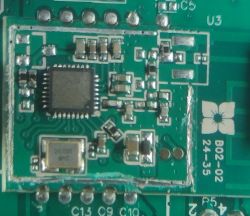I already have several devices in my house controlled via WiFi – circuits based on ESP8266. I would like to extend the smart home system with room temperature sensors – all for proper temperature control. The sensors are to be battery powered. The temperature sensors will be visible (they need to be arranged in the right place to measure the temperature) – so they must be aesthetically pleasing. Data must be sent (directly or indirectly) to the server (GET or POST call). Measurement accuracy of 0.3 degrees (repeatable, relative). Absolute can be slightly higher. Frequency of measurement – even every 2 minutes. And now my ideas:
1. only ESP with LiFePO4 or 2xAA – advantages: simplicity of construction, disadvantages – operating time on power about 2 months, need to obtain a case.
2. ESP+ATTINY with 2xAA – advantages: much longer battery life (ATTINY performs wake-up, measurement and in case of temperature changes – dispatch to ESP), disadvantages – more complex design, need to acquire a housing.
3. some off-the-shelf radio sensors, data collection and sending to server – advantages: possibility to use off-the-shelf sensors with long lifetime (1 year), nice housing sometimes temperature display on LCD, disadvantages: questionable operation through reinforced concrete ceiling (for 433MHz sensors), need to receive data and send again to server.
I would very much appreciate your opinions. I am particularly interested in version 3 solutions – maybe someone has done something like this?
1. only ESP with LiFePO4 or 2xAA – advantages: simplicity of construction, disadvantages – operating time on power about 2 months, need to obtain a case.
2. ESP+ATTINY with 2xAA – advantages: much longer battery life (ATTINY performs wake-up, measurement and in case of temperature changes – dispatch to ESP), disadvantages – more complex design, need to acquire a housing.
3. some off-the-shelf radio sensors, data collection and sending to server – advantages: possibility to use off-the-shelf sensors with long lifetime (1 year), nice housing sometimes temperature display on LCD, disadvantages: questionable operation through reinforced concrete ceiling (for 433MHz sensors), need to receive data and send again to server.
I would very much appreciate your opinions. I am particularly interested in version 3 solutions – maybe someone has done something like this?





